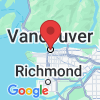
The Phantom Pest Journal

Enjoy a Wasp-Free Summer: Safe Wasp Control Tips for Surrey Families
Common Wasp Species in Surrey
Surrey is home to several wasp species, each with different nesting habits, behavior, and risk factors. Understanding their characteristics can help homeowners identify and manage infestations effectively.
1. Yellow Jackets (Vespula spp.)
Appearance: Bright yellow and black markings with a slender waist.
Aggressiveness: Highly aggressive, especially when their nest is threatened.
Nesting Habits:
Build underground nests or in wall voids, attics, and hidden spaces.
Can nest in rodent burrows, making them hard to detect until they become a problem.
Risk Factors:Stings are painful and can cause severe allergic reactions (anaphylaxis).
Frequently invade garbage bins, picnic areas, and outdoor kitchens.
Swarm aggressively when disturbed.
2. Paper Wasps (Polistes spp.)
Appearance: Brownish or reddish with yellow markings, longer legs than yellow jackets.
Aggressiveness: Less aggressive, but will sting when provoked.
Nesting Habits:
Build umbrella-shaped paper nests under eaves, porches, decks, and tree branches.
Prefer sheltered spots close to homes.
Risk Factors:Though not as aggressive as yellow jackets, they defend their nests fiercely.
Their open-structured nests are easier to spot and remove before the colony grows.
3. Hornets (Dolichovespula & Vespa spp.)
Appearance: Larger than yellow jackets, with black and white (bald-faced hornets) or black and yellow (European hornets) markings.
Aggressiveness: Highly territorial and will attack in swarms if their nest is disturbed.
Nesting Habits:
Build large papery nests in trees, shrubs, or on buildings.
Colonies can grow up to 700 workers.
Risk Factors:Stings contain more venom than a bee sting, causing extreme pain and swelling.
Nesting sites near homes pose a serious risk to children and pets.
How to Prevent Wasps Around Your Home
Taking proactive measures can greatly reduce the chances of a wasp infestation in your yard or home. Wasps are territorial and opportunistic, meaning they will avoid well-maintained areas but will quickly settle where food, shelter, and nesting sites are available.
Follow these four key strategies to keep your home and outdoor spaces wasp-free:
1. Secure Food and Waste Properly
Wasps are highly attracted to food and sweet scents, making outdoor eating areas and garbage bins prime targets. Ensuring proper food storage and waste management can help prevent wasps from gathering near your home.
How to Keep Wasps Away from Food & Waste:
Cover food during outdoor meals, especially sweet and protein-based items like soda, fruit, and grilled meats.
Store garbage securely in tightly sealed bins and empty them regularly to avoid buildup.
Clean up spills immediately, especially sugary substances like juice, soda, and alcohol.
Rinse recyclables (soda cans, juice bottles, etc.) before placing them in bins.
Keep pet food covered, as wasps are also attracted to animal kibble.
2. Seal Nesting Sites
Wasps prefer quiet, undisturbed spaces to build their nests. They often seek out gaps, cracks, and voids in homes and structures to establish colonies. Regularly inspecting and sealing these areas can prevent them from nesting on your property.
How to Eliminate Potential Wasp Nesting Sites:
Inspect and seal any cracks in walls, siding, and rooflines.
Install fine mesh screens on doors, windows, and vents to keep wasps from entering indoor spaces.
Repair damaged wood on fences, decks, and outdoor structures, as some wasp species burrow into wood to nest.
Seal gaps in outdoor sheds, garages, and playhouses to eliminate hidden nesting spots.
Trim back overgrown trees and bushes, as dense vegetation provides ideal shelter for wasp nests.
3. Use Wasp Bags to Deter Activity
Wasps are highly territorial and can be discouraged from nesting by creating the illusion that another colony already occupies the area. Wasp Bags are a simple yet effective deterrent that mimic the presence of an active nest, reducing the chances of new nests forming nearby.
Effective Ways to Use Wasp Bags:
Hang Wasp Bags in outdoor areas such as patios, decks, gardens, and near entry points to your home.
Place them early in the season to prevent wasps from scouting your property for potential nesting sites.
Position Wasp Bags around outdoor seating areas to create a protective perimeter.
Purchase high-quality Wasp Bags directly from Phantom Pest Control to ensure maximum effectiveness and professional-grade materials.
Run outdoor fans—wasps dislike strong air currents and may avoid areas with consistent airflow.
4. Inspect Your Property Regularly
Catching early signs of wasp activity allows for faster intervention before a full colony is established. Wasps prefer undisturbed, sheltered locations, making frequent inspections key to prevention.
How to Conduct a Wasp Inspection:
Check common nesting spots—look under eaves, gutters, decks, sheds, play structures, and porch railings.
Look inside attics, garages, and wall voids for hidden nests that may be forming.
Monitor for wasp activity—seeing a few wasps frequently hovering in the same area could indicate a nearby nest.
Move unused or covered objects—wasps may nest inside storage bins, stacked wood, and unused patio furniture.
Discourage wasp nesting by keeping frequently used areas active—wasps prefer quiet, undisturbed spaces.
How Phantom Pest Control Can Help
Phantom Pest Control offers safe and effective wasp nest removal services in Surrey to keep your home and family protected.
Professional Inspection – We locate nests and assess the level of infestation.
Safe Nest Removal – Our team uses expert techniques to remove nests without causing aggressive swarming.
Preventive Treatments – We apply deterrents to discourage future nesting in problem areas.
Ongoing Monitoring – For properties with recurring wasp issues, we offer scheduled inspections and control plans.
If you have noticed increased wasp activity around your home or discovered a nest on your property, do not attempt removal on your own—leave it to the professionals. Contact Phantom Pest Control in Surrey today for safe, effective, and long-term wasp control solutions.

Schedule a Pest Inspection
Ready to schedule a pest inspection? Contact us today.

